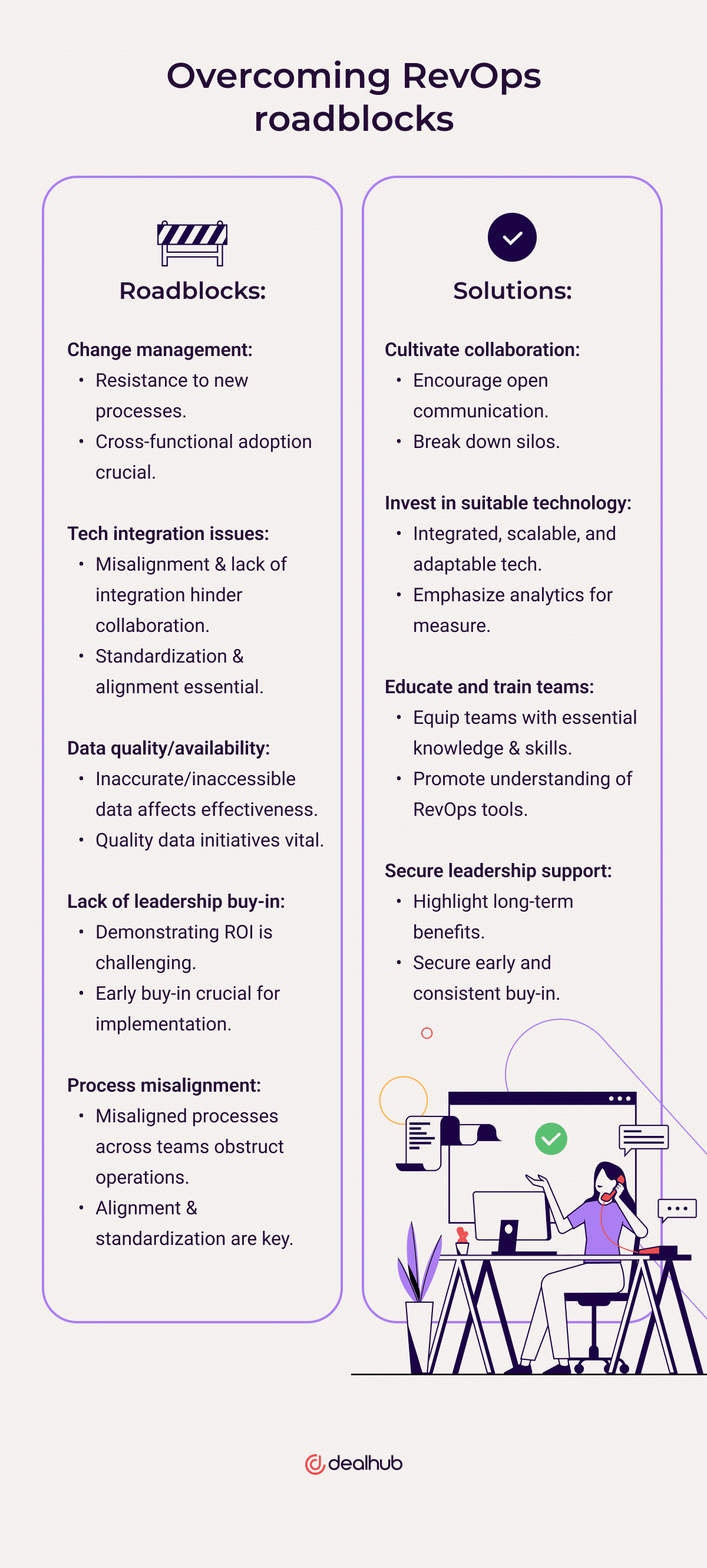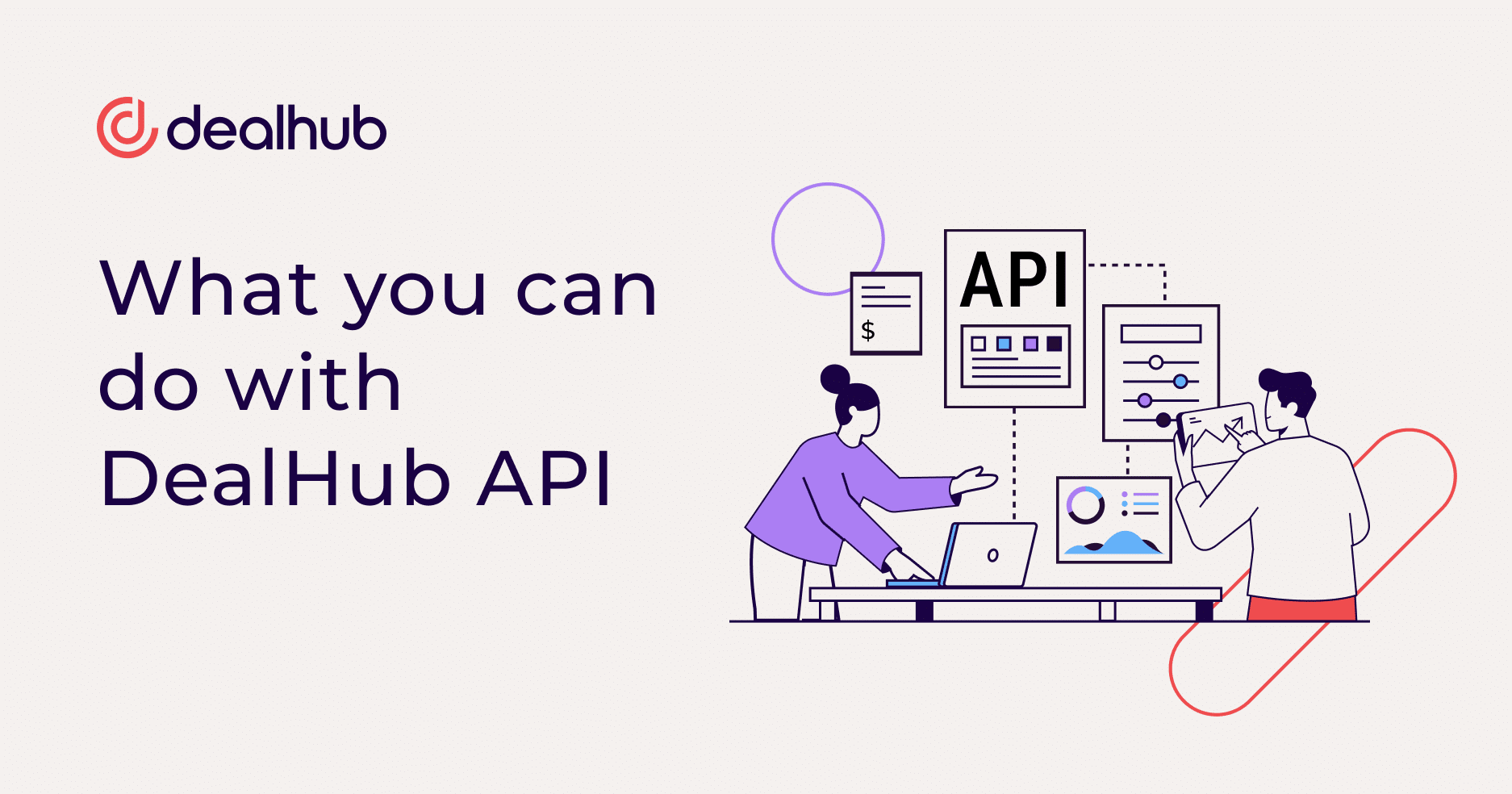RevOps: an integrated approach to driving revenue
Before we delve into the ways RevOps can boost customer retention, let’s understand its three core components:

Sales Operations
Sales Operations optimize the sales process, from lead generation to closing deals. It ensures your sales team has the right tools, processes, and training to maximize efficiency and effectiveness.
Marketing Operations
Marketing Operations, another vital pillar of RevOps, ensures that your marketing efforts align with sales and revenue goals. It streamlines marketing campaigns, tracks performance, and provides valuable insights for better targeting and lead generation.
Customer Success Operations
Customer Success Operations are all about delivering exceptional post-sales support and experiences. It aims to ensure that customers stay engaged with your product or service.
RevOps takes an integrated approach by aligning these functions and breaking down departmental silos. It creates a cohesive ecosystem where Sales, Marketing, and Customer Success teams work harmoniously towards a common goal – satisfying customers. When each team is aligned with a greater cross-department strategy, their individual efforts are focused on a common goal that grows revenue while impressing clients.
How RevOps keeps customers coming back
Once RevOps breaks down silos and aligns teams, it possesses the ability to continually attract and retain customers. Adopting a multi-faceted approach to client retention, RevOps employs a variety of techniques and strategies to customize offerings effectively for clients.
For example, RevOps:
Leveraging data-driven customer insights
RevOps relies heavily on data to understand customer behavior, preferences, and pain points. It encourages cross-departmental data sharing and analysis as well. By gathering and leveraging data effectively, RevOps can deliver personalized experiences that resonate with customers, ultimately leading to higher retention rates.
Providing a seamless customer journey
Mapping the customer journey is an essential aspect of RevOps. It can identify pain points and friction in the customer experience. RevOps streamlines processes to keep the buyer’s journey enjoyable, making customers’ interactions with your brand frictionless.
Cross-functional collaboration
RevOps has a unique superpower – it bridges the gaps between Sales, Marketing, and Customer Success. Setting shared goals and metrics fosters collaboration, and this synergy leads to improved customer retention. In addition, more cohesive strategies can develop once every team is on the same page regarding satisfying customers.
Predictive analytics and AI
Artificial intelligence is a secret RevOps weapon. Leveraging AI, RevOps can analyze data and use predictive analytics to anticipate client preferences. This proactive approach enables businesses to engage with customers promptly and relevantly, enhancing retention.
Driving success with customer feedback and satisfaction
RevOps doesn’t just gather feedback; it acts on it. It collects insights at every customer touchpoint, monitors KPIs like a Net Promoter Score (NPS) and Customer Satisfaction Score (CSAT), and continually seeks ways to improve the customer experience. This commitment to customer feedback is a powerful driver of retention.
Prioritizes customer lifecycle management
RevOps takes a holistic approach to customer retention by:
- Segmenting customers
- Creating tailored strategies
- Building retention-focused campaigns
It ensures that a customer’s concerns are addressed at every stage of their journey, making them feel valued and heard.
Mitigating the risk of churn
Identifying early signs of customer churn is crucial. RevOps can detect these signals and implement proactive retention measures on the fly. It’s not just about preventing churn but also finding effective strategies for winning back former customers.
Unifying revenue tech stack
Integration is the name of the game in RevOps. Successful RevOps teams will integrate multiple solutions into their tech stack to supercharge operations. These include:
- Customer Relationship Management (CRM) systems to assist with data centralization, lead management, pipeline visibility, and task automation.
- Marketing automation to assist with lead nurturing, email campaigns, lead scoring, analytics, and reporting.
- Customer success platforms to ensure teams successfully onboard clients, maintain health scoring and handle renewals and upsells.
- Configure, Price, Quote (CPQ) for accurate quoting, product customization, pricing optimization, and sales efficiency.
- Contract management platforms for faster contract execution, enhanced compliance and risk management, and streamlined contract lifecycle management.
- Billing platforms for subscription management, payment processing, revenue recognition, and streamlined billing.
With the right technologies in place and integrated seamlessly, RevOps can collect more data points to refine the customer experience, customize quotes, offer customer-specific discounts, cross and upsell, and more.
Key metrics for RevOps success
For RevOps to successfully drive customer retention, it’s essential to monitor critical metrics. Here are the crucial metrics you should be tracking:
Churn. A churn rate is defined as the percentage of customers who stop using your product/service during a specific period. A lower churn rate indicates higher customer retention.
Customer Lifetime Value (CLV). The CLV metric represents the total revenue a business can anticipate from a customer over their entire relationship. It clarifies the long-term value of retaining customers.
Net Promoter Score (NPS). NPS is a KPI that measures customer loyalty. It does this by asking how likely customers are to recommend a certain product/service to others. High NPS scores correlate with better customer retention.
Customer Satisfaction Score (CSAT). CSAT can measure the overall customer satisfaction with your product or service. Higher CSAT scores indicate satisfied customers who are more likely to stay.
Retention rate. Retention rate is a KPI that indicates the percentage of customers who continuously use your product or service over a specific time frame. A higher retention rate is a clear sign of success in retaining customers.
Repeat purchase rate. This metric tracks how often customers make repeat purchases. A high repeat purchase rate signifies loyal customers.
Renewal rate. For subscription-based businesses, the renewal rate measures the percentage of customers who renew their subscriptions. A high renewal rate indicates strong customer retention.
Customer health score. A customer health score is a composite metric that considers various factors like product usage, customer interactions, and feedback. It provides a comprehensive view of a customer’s relationship with your brand.
Overcoming RevOps roadblocks
While RevOps holds immense potential for customer retention, it’s not without its challenges.

Common roadblocks include:
- Change management: Beyond resistance to change, managing change itself can be challenging. Ensuring teams across Sales, Marketing, and Customer Success embrace new processes and tools is critical.
- Technology integration issues. Misaligned processes or lack of integration across teams can hinder collaboration and efficient operations (even if you have the right technology). Process standardization, proper integrations, and technology alignment are essential.
- Data quality and availability. Inaccurate, incomplete, or inaccessible data can hinder the effectiveness of RevOps efforts. Organizations must invest in data quality initiatives and ensure data is readily available for analysis and decision-making.
- Lack of buy-in from leadership. Demonstrating the ROI of RevOps initiatives can be difficult, and initiating a RevOps strategy can be complex, making it a heavy lift to get buy-in from leadership at the outset of your RevOps journey.
- Lack of process alignment. Misaligned processes across teams can hinder collaboration and efficient operations – even with the right technology in place. Process standardization and alignment are critical.
To overcome these obstacles, businesses must:
- Cultivate a culture of collaboration. Encourage open communication and teamwork across departments to break down silos and address resistance to change head-on by bringing everyone into the process early on.
- Invest in the right technology. Ensure your tech stack is integrated, scalable, and adaptable to evolving business needs. Ensure the technology you invest in has built-in analytics or can integrate with other tools to measure your RevOps efforts.
- Educate and train your teams. Be sure to equip your employees with the knowledge and skill sets they need to thrive in a RevOps-driven environment and ensure they understand how to use platforms and tools in your RevOps stack.
- Gain leadership support. Convince leadership of the long-term benefits of RevOps and secure their buy-in early on.
A commitment to customers
In conclusion, RevOps serves as the unsung hero in customer retention, enabling businesses to provide unparalleled customer experiences, streamline operations, and make informed decisions based on data. By adopting client-focused RevOps strategies, you have the opportunity to not only retain your customers but also convert them into passionate advocates for your brand. Investing in RevOps is a step towards sustainable growth, and DealHub’s solutions are here to support you on this journey. Commit to RevOps, dedicate yourself to your customers, and witness your business flourish as never before.





